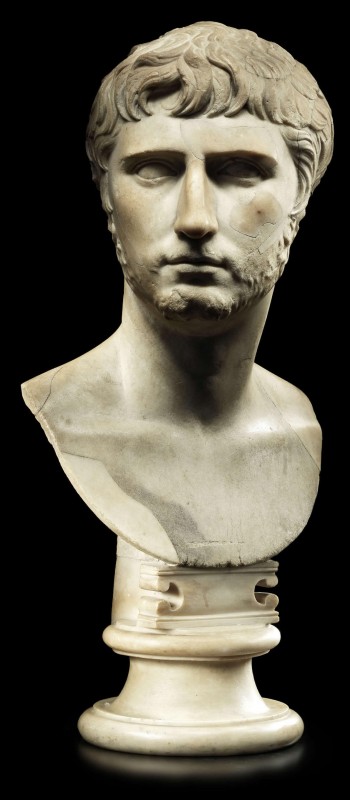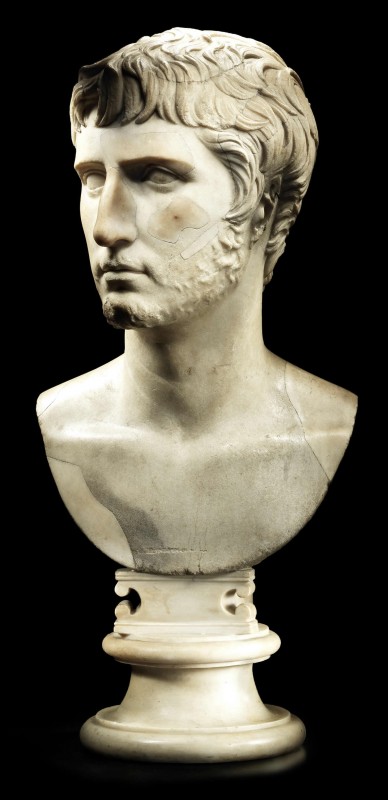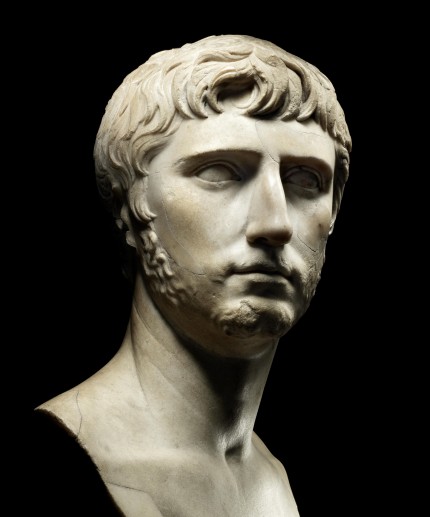A rare bust of Gaius Caesar, grandson, adopted son and heir of Augustus Caesar, is headed back home. It sold at a Bonhams London auction yesterday for £374,500 ($604,758) including buyer’s premium, more than double its pre-sale estimate, to an Italian buyer which means it will be going home for the first time in at least decades.
There’s no telling how long it’s been gone. Its first documented appearance was in art market in Los Angeles in the 1990s. We know it wasn’t recently excavated because there are Italian restorations from the 18th and 19th centuries and it’s mounted on a plinth from around the same time. It could very well have been illegally exported, mind you, like so many of its comrades, but there have been no attempts to block the sale, something the Italian government is not at all reluctant to do these days when they suspect a lot was removed from the country in contravention of cultural patrimony laws.
So there’s very little known history about the bust itself except what can be deduced from its features. Gaius is portrayed in idealized beauty — he seriously looks like a movie star — with long curly sideburns and a short beard just covering his chin.


It’s that facial hair which makes the piece so unusual. Portraits of Gaius Caesar have been classified into five types; this bearded look is the fifth and rarest. The facial hair is thought to be an iconographic allusion to Mars, the god of war, and the bust created in honor of Gaius’ military victory either Arabia in 1 A.D. or in Artagira, Armenia, in 3 A.D. The latter victory turned out to be a Pyrrhic one for Gaius himself since he was wounded in the battle and that wound would claim his life five months later when he was just 23 years old. (If Tacitus is right, Augustus’ formidable wife Livia saw to it that the wound became fatal so that Augustus would have to make her son Tiberius his heir.)
There’s been debate in the scholarship over whether Type Fives even are Gaius. Some historians believe they’re early portraits of Augustus Caesar when he was still Octavian and that the beard was worn in mourning for the death of Julius Caesar, his great-uncle and adopted father. It’s a difficult call to make because Gaius and his younger brother Lucius were both deliberately portrayed as looking like Augustus to provide a visual reinforcement that they were his heirs, destined to carry on his legacy of successful leadership. Bonhams ultimately sides with University of Southern California archaeologist John Pollini who argues in his 1987 book The Portraiture of Gaius and Lucius Caesar that the Type Five portraits are of Gaius, not Octavian.
